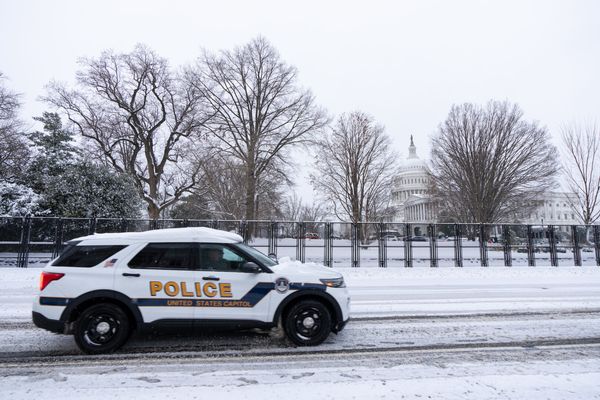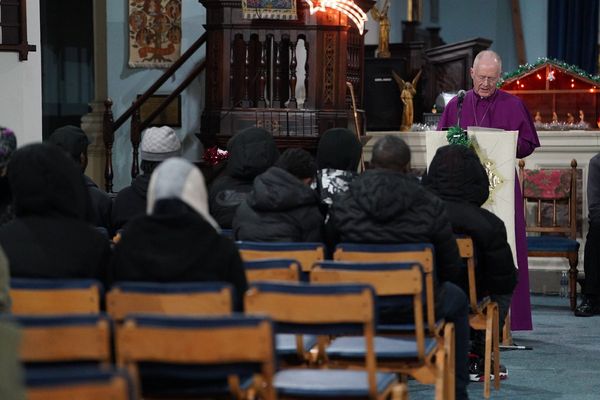
Checking-in is currently “useless” in stopping the spread of Covid-19 but QR codes can still play an important role as the nation enters a new phase of the pandemic, according to epidemiologists.
Mandatory QR code check-ins remain in several settings across Australia, including in states where contact tracing efforts have been wound back in the face of rising Omicron infections.
The Victorian premier, Daniel Andrews, on Thursday conceded there was “not very much contract tracing going on” in the state, with the Service Victoria app now largely used to show proof of vaccination where necessary.
“There might be some very limited circumstances where we would use that information for contact tracing,” he told reporters.
“When you’ve got as many cases as we’ve got and you’re up against a variant that’s as wildly infectious and as easily transmitted as Omicron, we’re well beyond outbreaks, we’re well beyond contact tracing.”
Asked whether there would be any changes to Victoria’s QR system, Andrews replied they were here to stay for “as long as the experts tell us they serve a purpose”.
The University of South Australia epidemiologist Adrian Esterman said while there were limits to the use of QR codes for now, it was important to keep the infrastructure in place.
“When you start getting into the hundreds of cases and even worse, thousands of cases, there’s no contact tracing in the world that can manage ... by the time that you get notified you’re a close contact, it’s probably a week late and you’ve already had the infection and you’ve recovered,” he told the Guardian.
“It is simply not needed unless we get down to sufficiently low case numbers that contact tracers can actually use the information. Until then, QR codes are pretty useless unless they are used for entry where they check your vaccine status.”
However, Esterman maintains they should continue being used in the event a new more virulent variant arises in the future.
“If we say that people don’t bother to use QR codes, what happens when the next variant comes along and potentially it could be useful then?” he said.
“QR codes are a bit like wearing a face mask, they should really be ubiquitous, you simply just get used to doing it.”
Mike Toole from the Burnet Institute agrees.
“We should keep those restrictions that have some proven effectiveness and yet don’t intrude on our lives and don’t affect the economy,” he said.
“I don’t know why it’s fatiguing, it takes two seconds.”
While there are reports fewer people are using QR codes than in previous months, Toole notes many people are choosing to stay at home amid the latest outbreak.
The chair of epidemiology at Deakin University, Catherine Bennett, said even without contact tracing QR codes continued to serve a purpose, helping those who have tested positive to keep track of where they’ve been and who they’ve come into contact with.
But she suggested governments rethink their approach.
“It needs to be more discerning. With high exposure rates in the community, less is more. Concentrate on fewer sites that are more risky and really make sure we do get people using it,” she said.
NSW scrapped the use of mandatory codes in mid-December other than for high-risk venues including hospitals, aged and disability care facilities, gyms, places of worship, funerals, personal services, pubs and clubs and outdoor music festivals with over 1,000 people.
But as the surging case numbers saw thousands of workers furloughed in the lead up to Christmas, the government backflipped on the decision a week later, when the premier, Dominic Perrottet, announced mandatory QR codes would return along with an indoor mask mandate.
The Guardian understands the original decision to scrap mandatory check-ins at lower-risk settings such as supermarkets was based on advice from NSW Health they were of little use as the state moved away from stringent contact tracing.
That advice had not changed when the government reintroduced the measure.
The Australian Health Protection Principal Committee, which advises national cabinet, also recommended in late December to review the utility of QR codes where people are unlikely to catch Covid-19.
When the NSW government announced on Tuesday that it was extending mandatory QR check-ins until 28 February, Perrottet defended their use as a measure to increase confidence.
“People feel confident checking in, and our job as government is to instil confidence in our people, in the circumstances where we have a highly vaccinated population, to go out to enjoy the best that NSW has to offer in a way where you keep yourself, your friends and your family safe,” he said.
Bennett said QR codes should only remain in high-risk settings such as hospitals, aged care and disability facilities as well as at venues where you are more likely to contract the virus, such as hairdressers, beauty salons and nightclubs.
“They’ve got to think about what they’re trying to get out of the system. It’s not just about telling someone they might have been exposed to a case in a place where they probably had a very small chance of contracting the virus a week ago,” she said.
“The worry now is that it’s all lost in the noise.”







